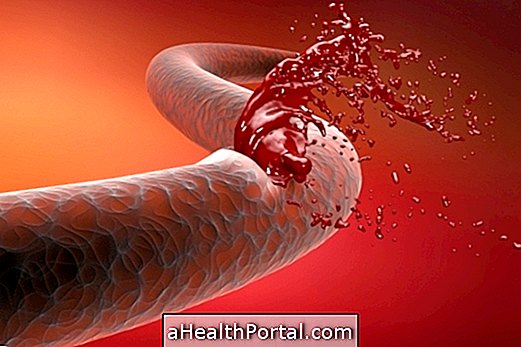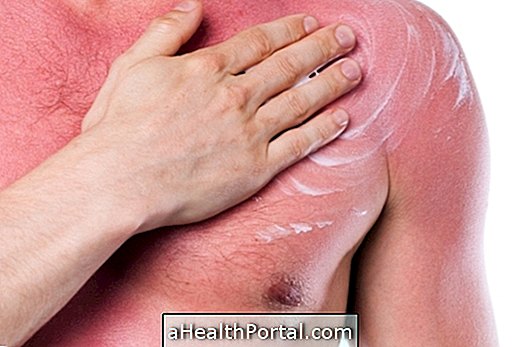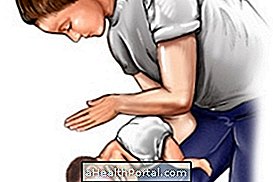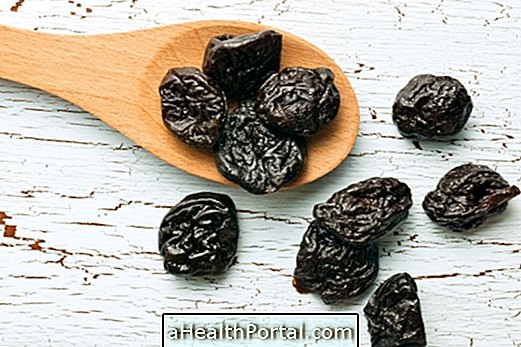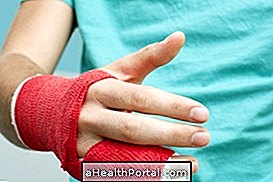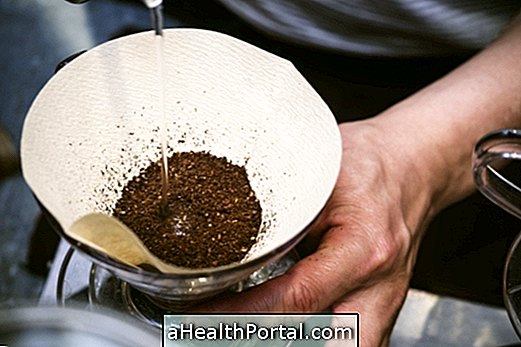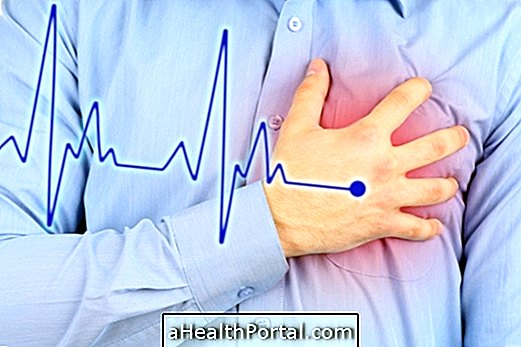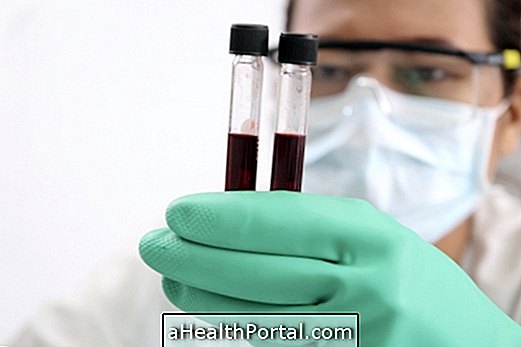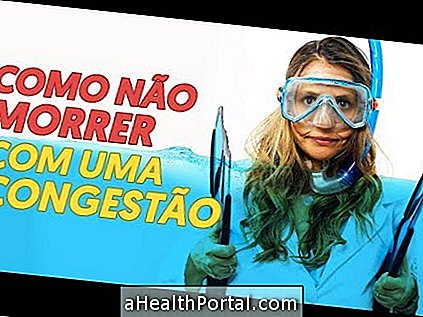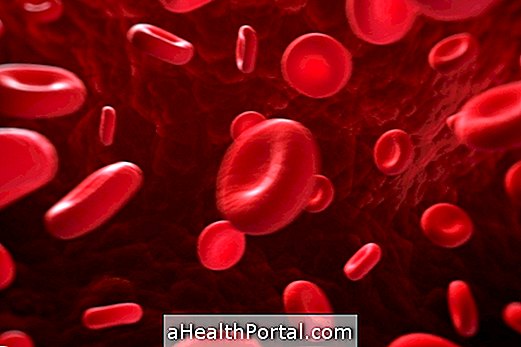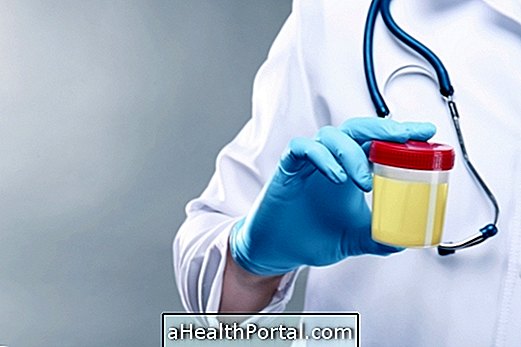In most burns, the most important step is to cool the skin quickly so that the deeper layers do not continue to burn and cause injury.
However, depending on the degree of the burn, the care may be different, especially in the 3rd degree that should be evaluated as quickly as possible by a doctor in the hospital, to avoid serious complications such as destruction of nerves or muscles.
We indicated in the following video the first steps to treat a burn at home, in a light and fun way:

What to do on 1st degree burn

First-degree burn affects only the superficial layer of the skin causing signs like pain and redness in the region. In these cases it is recommended that:
- Place the burned region under cold water for at least 15 minutes;
- Keep a clean cloth moistened with cold water in the area for the first 24 hours, changing whenever water warms up;
- Do not apply any product like oil or butter to the burn;
- Give a moisturizing or healing ointment for burns, such as Nebacetin or Ointment. See a more complete list of ointments;
This type of burn is more common when you stay in the sun a lot or when you touch a very hot object. Usually the pain disappears after 2 or 3 days, but the burn may take up to 2 weeks to heal, even with the use of ointments.
Generally, 1st degree burn does not leave any type of scar on the skin and rarely presents complications.
What to do on 2nd degree burn

Second degree burn affects the middle layers of the skin, so other than redness and pain, other symptoms such as blisters or local swelling may develop. In this type of burn it is advised that:
- Place the affected area under running cold water for at least 15 minutes;
- Wash the burn carefully with cold water and neutral pH soap, avoiding to rub with too much force;
- Cover the area with a wet gauze or a lot of vaseline, and attach with a bandage, during the first 48 hours, changing whenever necessary;
- Do not pierce the blisters and do not apply any product on site to avoid the risk of infection;
- Seek medical attention if the blister is too large.
This burn is more frequent when the heat is in contact with the skin for a longer period of time, such as when hot water is spilled on the clothing or if it is held warm for a long time, for example.
In most cases, the pain improves after 3 days, but the burn may take up to 3 weeks to disappear. Although second-degree burns rarely leave scars, the skin may become lighter on the spot.
What to do in 3rd degree burn

3rd degree burn is a serious condition that can be life threatening as the deeper layers of the skin are being affected, including nerves, blood vessels and muscle. Therefore, in this case it is recommended that:
- Immediately call an ambulance by calling 192 or take the person to the hospital quickly;
- Cool the burned region with saline or, failing that, tap water for about 10 minutes;
- Carefully place a sterile gauze moistened in saline or a clean cloth over the affected area until medical aid arrives. If the burned area is very large, a clean sheet moistened with saline solution and wiping hair may be wrapped;
- Do not place any type of product on the affected region.
In some cases, the 3rd degree burn can be so severe that it causes failure in several organs. In these cases, if the victim passes out and stops breathing, cardiac massage should be started. See here the step-by-step massage.
Since all layers of skin are affected, the nerves, glands, muscles and even internal organs can suffer serious injuries. In this type of burn you may not feel pain due to nerve destruction but immediate medical help is needed to avoid serious complications as well as infections.
What not to do
After burning the skin it is very important to know what to do to relieve symptoms quickly, but one should also know what not to do, especially to avoid complications or sequelae. Therefore, it is advised that:
- Do not attempt to remove objects or clothes attached to the burn;
- Do not butter, toothpaste, coffee, salt or other household products;
- Do not burst bubbles that appear after the burn;
Also, do not apply gel on the skin, as extreme cold besides causing irritation, can worsen the burn and even cause a shock due to the great difference of temperatures.
When to go to the hospital
Most burns can be treated at home, however, it is advised to go to the hospital when the burn is larger than the palm of the hand, many bubbles appear or is a third degree burn that affects the deeper layers of the skin.
In addition, if the burn also occurs in sensitive areas such as hands, feet, genitals or face, you should also go to the hospital.


